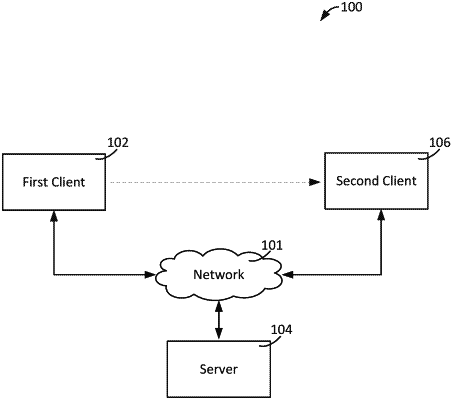| CPC H04L 67/06 (2013.01) [H04L 67/01 (2022.05); H04L 67/02 (2013.01); H04L 67/10 (2013.01); H04L 67/1095 (2013.01); H04L 67/52 (2022.05); H04L 67/55 (2022.05); H04W 4/80 (2018.02)] | 18 Claims |

|
1. A method for facilitating authorized, proximal device-to-device communication within a controlled computing system, the method comprising:
storing, in one or more databases associated with a server, within the controlled computing system, a computer-generated identifier, wherein the computer-generated identifier allows access to one or more entries of shared content stored within the controlled computing system by a plurality of authorized clients within the controlled computing system, wherein authorization of the plurality of authorized clients is associated with an authorized application operating on the plurality of authorized clients, and wherein the computer-generated identifier is associated with at least one of: (i) the one or more entries of shared content stored within the controlled computing system, or (ii) one or more references to the one or more entries of shared content stored within the controlled computing system;
receiving, via an API call handler of the server, a request from the authorized application of a second client comprising the computer-generated identifier and an authorization parameter stored in the authorized application of the second client, wherein the request is generated by the authorized application of the second client in response to the second client receiving the computer-generated identifier from a first client comprising a smartphone without prior pairing of the first client and the second client, wherein the second client receives the computer-generated identifier from the first client by one of: (i) scanning, by the second client, a QR code presented by the first client, (ii) opening a dialog GUI or input of the second device to receive the computer generated identifier of the first device, or (iii) a Bluetooth LE, NFC or other radio signal received by the second client directly from the first client without prior pairing;
transmitting a query from the server to the one or more databases based on receiving the request, wherein in response to the query the one or more databases provide a response comprising the one or more entries of shared content associated with the computer-generated identifier; and
transmitting, via the API call handler of the server, the one or more entries of shared content to the second client, wherein the second client executes the authorized application to download or stream the one or more entries of shared content from the server.
|